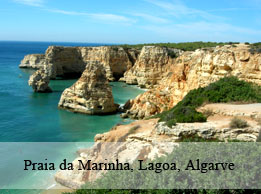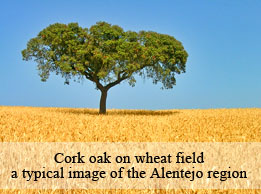ADVERTISEMENT
|
|
|
Portugal Travel & Tourism Guide
Geography of Portugal
NextGen Day feature Europe links, Europe resources and large selection of Europe budget airlines, Europe chartered planes, Europe sea cruises, Europe ferries, Europe travel agencies, Europe land transports and Europe attractions including Europe beaches, Europe medical tourism, Europe retirement homes, Europe historical and Europe pilgrimage tours. NextGen Day offers travel tips and information for top travel places and best destinations in Africa, Asia, Australia, Europe, Middle East and United States of America.
 The climate can be classified as Mediterranean type csa in the southern areas, and csb in the north, according to the Köppen climate classification. Portugal is one of the warmest European countries, the annual temperature averages in mainland Portugal are 13 °C in the north and 18 °C in the south and it is over 20 °C on the warmest spots, like south coast of Madeira island. The Madeira and Azores Atlantic archipelagos have a narrower temperature range. Extreme temperatures occur in the mountains of northeastern parts of the country in winter and Southeastern parts in summer. The climate can be classified as Mediterranean type csa in the southern areas, and csb in the north, according to the Köppen climate classification. Portugal is one of the warmest European countries, the annual temperature averages in mainland Portugal are 13 °C in the north and 18 °C in the south and it is over 20 °C on the warmest spots, like south coast of Madeira island. The Madeira and Azores Atlantic archipelagos have a narrower temperature range. Extreme temperatures occur in the mountains of northeastern parts of the country in winter and Southeastern parts in summer.
Sea coastal areas are milder. Official absolute extremes registered so far have been -16.0 °C in Penhas da Saúde and +47.4 °C in Amareleja, Moura municipality, Alentejo region. There are registered values of 50.5 for Riodades. It is very plausible that these values could be registered in the warmest valleys such as Guadiana, Douro and Tagus. Mainland Portugal is split by its main river, the Tagus. The northern landscape is mountainous in the interior areas, with plateaus indented by river valleys. The south, between the Tagus and the Algarve), features mostly rolling plains and a climate somewhat warmer and drier than in the cooler and rainier north. The Algarve, separated from the Alentejo by mountains, has a climate much like southern coastal Spain.
 The islands of the Azores are located in the Mid-Atlantic Ridge whilst the Madeira islands were formed by the activity of an in-plate hotspot, much like the Hawaiian Islands. Some islands have had volcanic activity as recently as 1957. Azores have a subtropical humid climate, as well as Madeira which is warmer and more diversified. In the mountains it is possible to have a Mountain Temperate climate, in the lowlands a sub-tropical Humid climate with the exception of Porto Santo and Salvages Islands with a Desert climate. Portugal is the only European country that has a Tropical climate in the oceanic area of South Azores, due to the strong influence of the Gulf Stream in this area. Sea water temperatures there remain over 20°C even in the middle of winter. Portugal's highest point is Mount Pico on Pico Island in the Azores. This is an ancient volcano measuring 2,350 meters. Mainland Portugal's highest point is Serra da Estrela, measuring 1993 meters. The islands of the Azores are located in the Mid-Atlantic Ridge whilst the Madeira islands were formed by the activity of an in-plate hotspot, much like the Hawaiian Islands. Some islands have had volcanic activity as recently as 1957. Azores have a subtropical humid climate, as well as Madeira which is warmer and more diversified. In the mountains it is possible to have a Mountain Temperate climate, in the lowlands a sub-tropical Humid climate with the exception of Porto Santo and Salvages Islands with a Desert climate. Portugal is the only European country that has a Tropical climate in the oceanic area of South Azores, due to the strong influence of the Gulf Stream in this area. Sea water temperatures there remain over 20°C even in the middle of winter. Portugal's highest point is Mount Pico on Pico Island in the Azores. This is an ancient volcano measuring 2,350 meters. Mainland Portugal's highest point is Serra da Estrela, measuring 1993 meters.
Portugal's Exclusive Economic Zone, a seazone over which the Portuguese have special rights over the exploration and use of marine resources, has 1,727,408 km². This is the 3rd largest Exclusive Economic Zone of the European Union and the 11th largest in the world. Conservation areas of Portugal include one national park, 12 natural parks, 9 natural reserves, 5 natural monuments, and 7 protected landscapes, ranging from the Parque Nacional da Peneda-Gerês to the Parque Natural da Serra da Estrela to the Paul de Arzila. Climate and geographical diversity shaped the Portuguese Flora.
 As far as Portuguese forests are concerned, due to economic reasons the pine tree, the chestnut tree, the cork oak, the holm oak, the Portuguese oak, and the eucalyptus are very widespread. As far as Portuguese forests are concerned, due to economic reasons the pine tree, the chestnut tree, the cork oak, the holm oak, the Portuguese oak, and the eucalyptus are very widespread.
Mammalian fauna is diverse and includes the fox, badger, Iberian lynx, Iberian Wolf, wild goat, wild cat, hare, weasel, polecat, mongoose, civet, brown bear and many others. Portugal is an important stopover place for migratory birds, in places such as Saint Vicent Cape or Monchique mountain, where thousands of birds that fly from Europe to Africa in the Autumn or on the opposite direction can be seen in the Spring. They congregate there because the Iberian Peninsula is the closest place in Europe to Africa. Portugal has around 600 bird species and almost every year there are new records. The islands have some species of American, European, and African origin, while the mainland shares European and African bird species.
Portugal has over 100 freshwater fish species and vary from the giant European catfish to some small and endemic species that live only in small and located lakes. Some of these rare and specific species are highly endangered due to habitat loss, pollution and drought. Marine fish species number are on the thousands mark and include the sardine, tuna and Atlantic mackerel. The marine bioluminescence is very well-represented , with interesting phenomena like the glowing plankton, that is possible to observe in some beaches. In Portugal it is also possible to observe the upwelling phenomena, especially on the west coast, which makes the sea extremely rich in nutrients and biodiversity. Portuguese marine waters are one of the richest in biodiversity in the world.
There are many endemic species of Insect fauna, that are only found in some places in Portugal, others are more widespread like the stag beetle and the cicada. Macaronesian islands have many endemic species that developed differently from other places in the world due to their isolated locations and so very unique species have evolved there. Madeira is the only place where it is possible to observe 200 species of land gastropods. Laurissilva is a unique type of subtropical rainforest in Europe and in the world. It is found in Madeira and The Azores and also on the Canary islands, Spain.
Source: Wikipedia Encyclopedia
Portugal Hotels
<1> <2> <3> <4> <5> |

 The climate can be classified as Mediterranean type csa in the southern areas, and csb in the north, according to the Köppen climate classification. Portugal is one of the warmest European countries, the annual temperature averages in mainland Portugal are 13 °C in the north and 18 °C in the south and it is over 20 °C on the warmest spots, like south coast of Madeira island. The Madeira and Azores Atlantic archipelagos have a narrower temperature range. Extreme temperatures occur in the mountains of northeastern parts of the country in winter and Southeastern parts in summer.
The climate can be classified as Mediterranean type csa in the southern areas, and csb in the north, according to the Köppen climate classification. Portugal is one of the warmest European countries, the annual temperature averages in mainland Portugal are 13 °C in the north and 18 °C in the south and it is over 20 °C on the warmest spots, like south coast of Madeira island. The Madeira and Azores Atlantic archipelagos have a narrower temperature range. Extreme temperatures occur in the mountains of northeastern parts of the country in winter and Southeastern parts in summer. The islands of the Azores are located in the Mid-Atlantic Ridge whilst the Madeira islands were formed by the activity of an in-plate hotspot, much like the Hawaiian Islands. Some islands have had volcanic activity as recently as 1957. Azores have a subtropical humid climate, as well as Madeira which is warmer and more diversified. In the mountains it is possible to have a Mountain Temperate climate, in the lowlands a sub-tropical Humid climate with the exception of Porto Santo and Salvages Islands with a Desert climate. Portugal is the only European country that has a Tropical climate in the oceanic area of South Azores, due to the strong influence of the Gulf Stream in this area. Sea water temperatures there remain over 20°C even in the middle of winter. Portugal's highest point is Mount Pico on Pico Island in the Azores. This is an ancient volcano measuring 2,350 meters. Mainland Portugal's highest point is Serra da Estrela, measuring 1993 meters.
The islands of the Azores are located in the Mid-Atlantic Ridge whilst the Madeira islands were formed by the activity of an in-plate hotspot, much like the Hawaiian Islands. Some islands have had volcanic activity as recently as 1957. Azores have a subtropical humid climate, as well as Madeira which is warmer and more diversified. In the mountains it is possible to have a Mountain Temperate climate, in the lowlands a sub-tropical Humid climate with the exception of Porto Santo and Salvages Islands with a Desert climate. Portugal is the only European country that has a Tropical climate in the oceanic area of South Azores, due to the strong influence of the Gulf Stream in this area. Sea water temperatures there remain over 20°C even in the middle of winter. Portugal's highest point is Mount Pico on Pico Island in the Azores. This is an ancient volcano measuring 2,350 meters. Mainland Portugal's highest point is Serra da Estrela, measuring 1993 meters. As far as Portuguese forests are concerned, due to economic reasons the pine tree, the chestnut tree, the cork oak, the holm oak, the Portuguese oak, and the eucalyptus are very widespread.
As far as Portuguese forests are concerned, due to economic reasons the pine tree, the chestnut tree, the cork oak, the holm oak, the Portuguese oak, and the eucalyptus are very widespread.